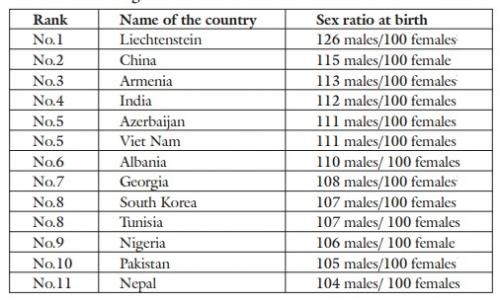
A Kanya (Girl) in our Sociey
In many parts of India, the birth of a girl child is not welcomed. Right from her arrival, she faces discrimination, humiliation, and oppression at every stage of life. When it comes to healthcare, education and growth opportunities, she is neglected because of her gender. Some manage to survive and foster new paths to follow. Most, however, surrender hopelessly to the sad fate assigned to them.
In a country rife with gender inequalities and an underlying nature of patriarchy, girl children often find themselves at the short end of the stick. Discrimination against girls is rampant and due to the fear of abuse and exploitation, they are kept at home and not sent to school. Child marriage is yet another glaring issue due to which girls are forced to give up going to school at an early age.
The issue of girl child rights and protection in India is a very serious concern. Being home to more than one third of the 10 million child brides in the world, India has one of the highest numbers of girls forced into marriage before the legal age of 18. If one half of our society remain so vulnerable to violence and neglect, how will the country advance or progress? Not only are they unsafe at home where they are victims of stereotypical attitude, but also in learning environments. Ill-equipped schools that lack separate toilets for girls are one of the major deterrents for parents not willing to send their girls to study. The few who manage to attend school risk violence and abuse. According to India’s 2011 census, 53% households and 11% schools had no toilets. This lack of safety deprives young girls of an opportunity to educate themselves and better their lives.
In order to make sure that girl children get access to quality education, we need to tackle the mindset that makes it okay for young children to be employed. Girl Child Rights are being aggressively advocated in the country by individuals, governmental organisations and many NGOs.
We want to be part of a world where girls are celebrated, where they are treated equally with love and respect. We want to change the attitude of the society today that girls must be given the same opportunities and protection as boys and must be treated at par. A girl’s childhood should be preserved, cherished, nurtured and protected as she has the right to survive and develop to participate in all the decisions that impact her life.
Our Objectives for “Kanya”:
• Reducing the gender gap and differentiation after birth
• Empowering the girl child to take decisions
• Protection and entitlement of the rights for the girls
• Reducing biases against a girl child
• Developing systems and programmes that relate to the survival and nourishment of the girl child, etc.
• Reduce the lack of inclusiveness, effective literacy and equity amongst the girl child and the boy child to receive health treatments
• Education that helps create attitudinal shifts that emphasise the rights of a girl child
• Building women leaders from the community through sensitisation programmes that help them understand their rights and ensure it for girls and women like them.
What does a girl child undergoes?
- 42% of married women in India were married as children (District Information System for Education (DISE) 3).
- 1 in every 3 child brides in the world is a girl in India (UNICEF).
- India has more than 45 lakh girls under 15 years of age who are married with children. Out of these, 70% of the girls have 2 children (Census 2011).
Cold Hard Facts:

A preference of son over daughter is a major reason for female infanticide in many countries around the world. Dowry system in South Asia, which makes daughters “an unaffordable economic burden”, also contributes to female infanticide.
Titled “Female Infanticide Worldwide: The case for action by the UN Human Rights Council”, the report makes a continent-wise analysis of infanticide patterns. It sets the tone by stating that 117 million girls demographically go “missing” due to sex-selective abortions, as claimed by the United Nations Population Fund.
India has one of the highest female foeticide incidents in the world. The female child population in the age group of 0-6 years declined from 78.83 million in 2001 to 75.84 million in 2011. During the period 1991-2011, the child sex ratio (0-6 years) declined from 945 to 914.
Apart from Pre-natal Diagnostic Techniques (Regulation and Prevention of Misuse) Act, 1994 (PNDT Act) to address the issue of sex-selective abortion, India also enacted the Medical Termination of Pregnancy (MTP) Act in 1971 to regulate access to safe abortions. The MTP Act of 1971, amended in 2002, allows abortion up to 20 weeks of pregnancy in cases where “the continuance of the pregnancy would involve a risk to the life of the pregnant woman or of grave injury to her physical or mental health”.
The Ministry of Health and Family Welfare has acknowledged that illegal abortions still outnumber legal abortions and thousands of women die every year due to complications resulting from unsafe abortions. According to the Population Research Institute, at least 12,771,043 sex-selective abortions had taken place in India between 2000 and 2014. It takes the daily average of sex-selective abortion to 2,332.
The under-reporting under the MTP Act has also been a problem.
In a bid to encourage families to have girl children, prevent female foeticide and educate the girl child, the government launched Beti Bachao, Beti Padhao campaign in January 2015. It also launched several conditional cash transfer schemes such as Balika Samriddhi Yojana and Dhanalakshmi Scheme.